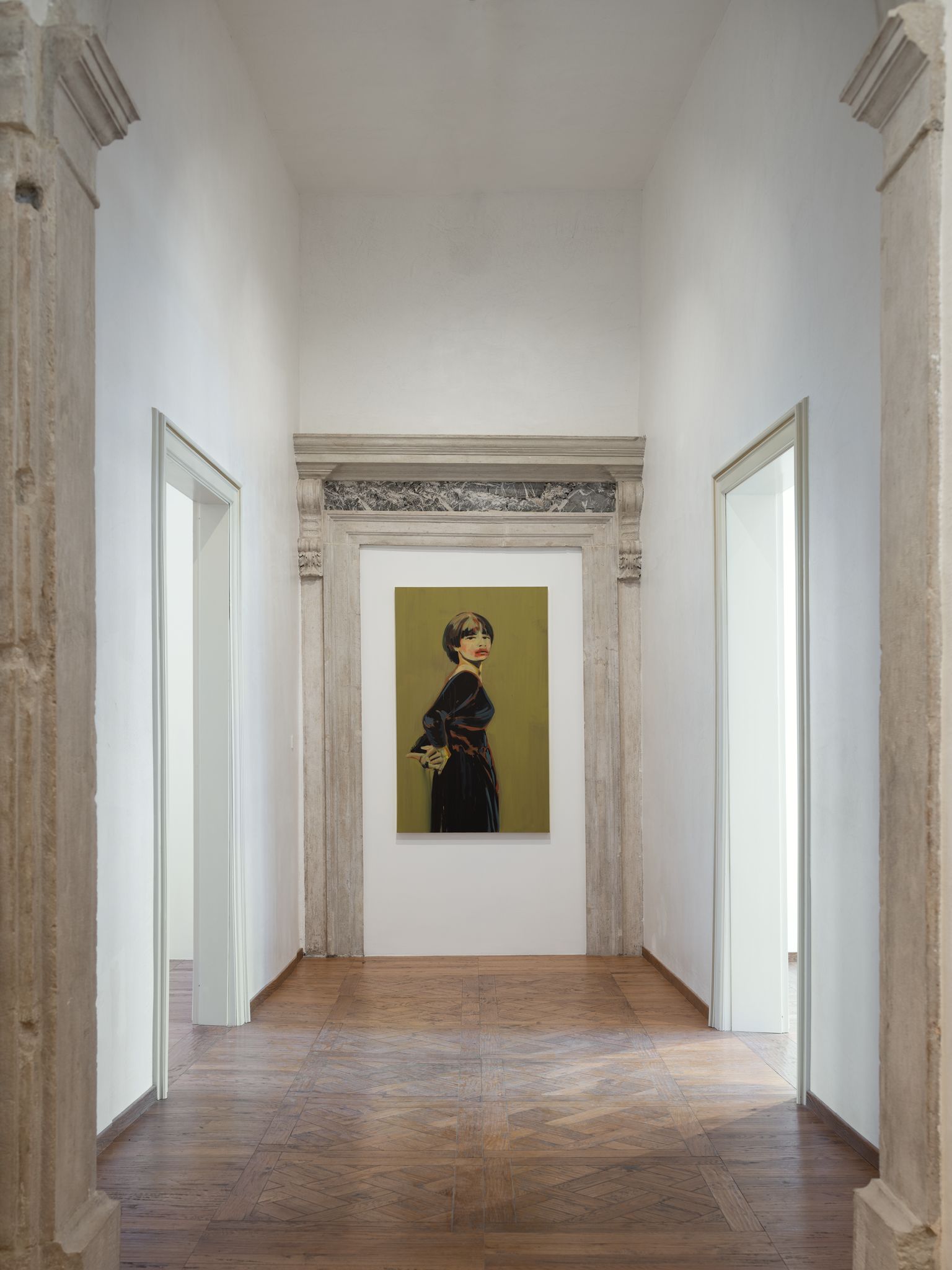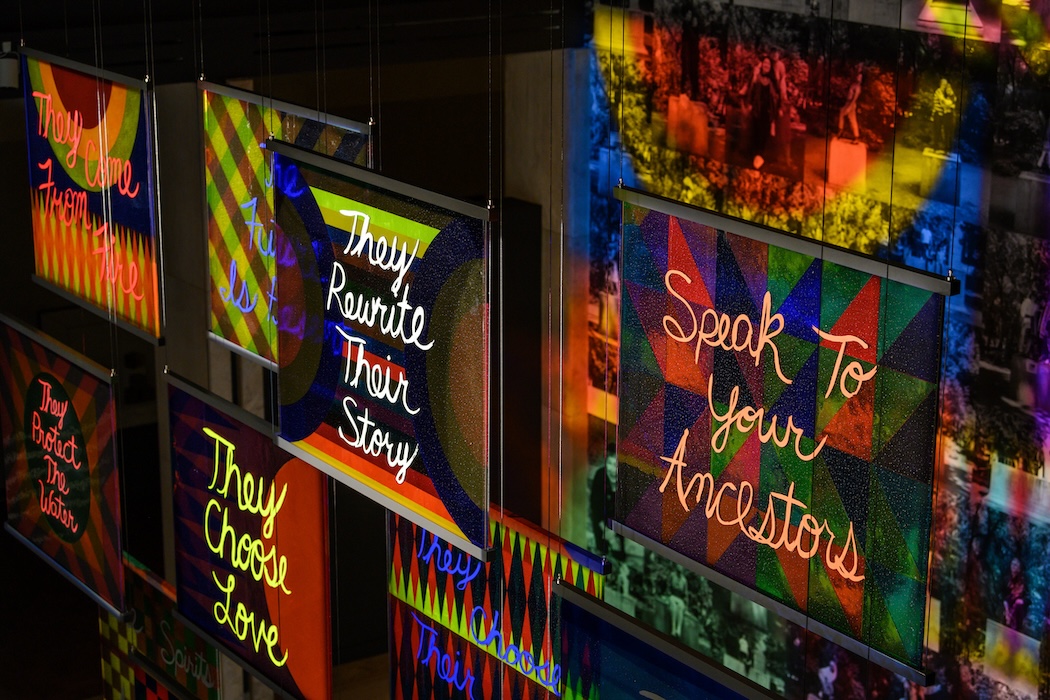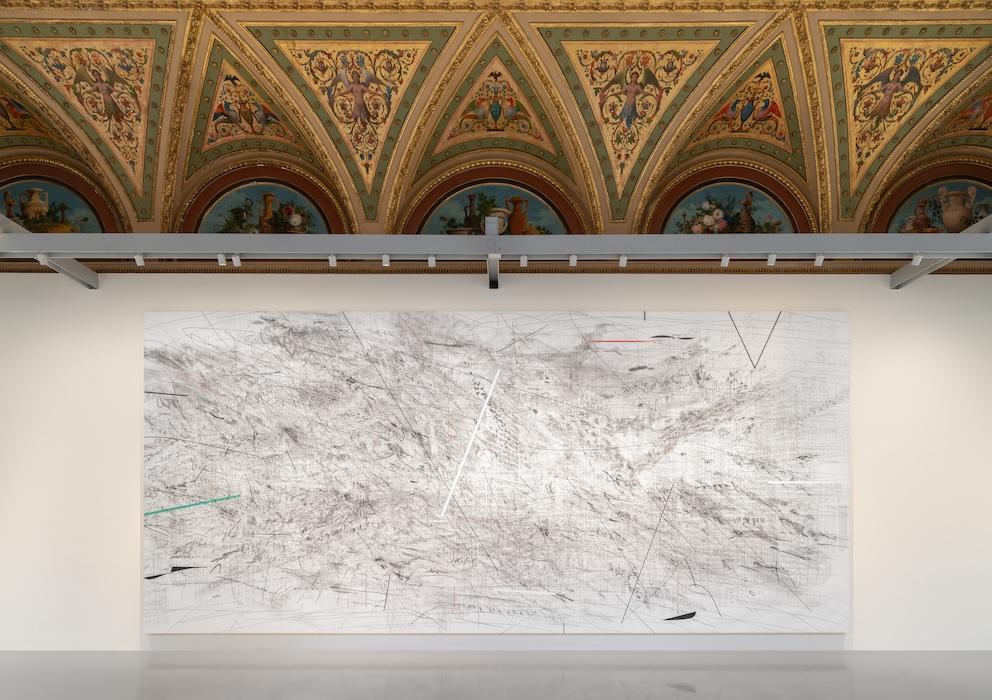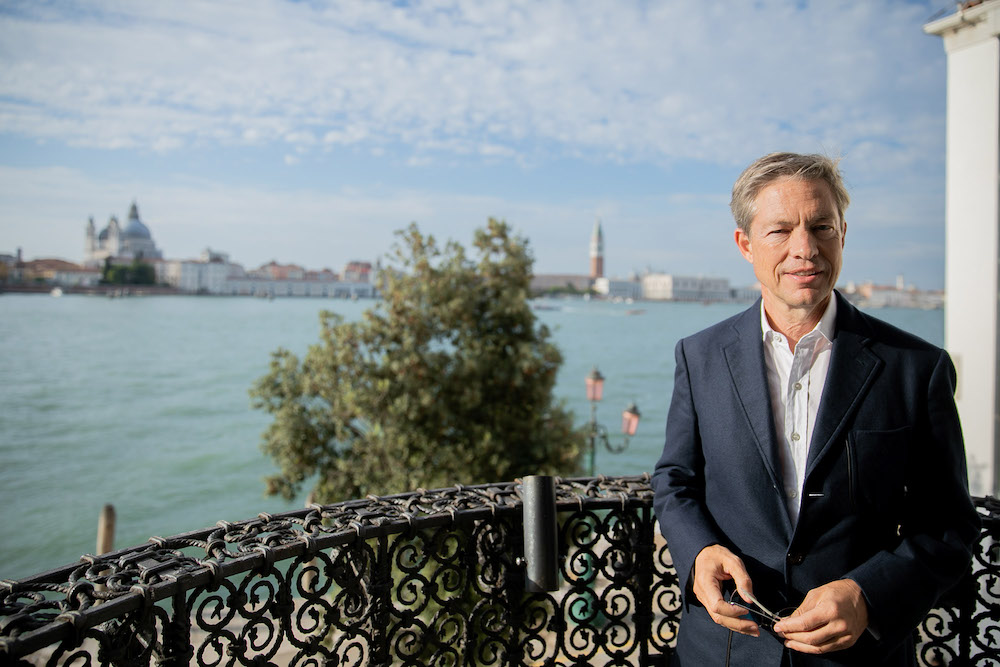Last week in Venice, Claire Tabouret’s “I am spacious, singing flesh,” opened at the Palazzo Cavanis in Venice. On view through November 27 and curated by Kathryn Weir, it is presented by FABA (Fundacion Almine y Bernard Ruiz-Picasso para el Arte) in collaboration with Almine Rech.
The exhibition is a survey of 25 pieces, including paintings, sculptures, videos, and works on paper. Initially interested in exploring ritual objects and the supernatural, Tabouret was fascinated by an encounter with the Madri of Capua sculptures, two of which also appear in the show. These objects that were made in gratitude for miracles are in dialogue with nearly two decades of work, tied together by the constant of change.
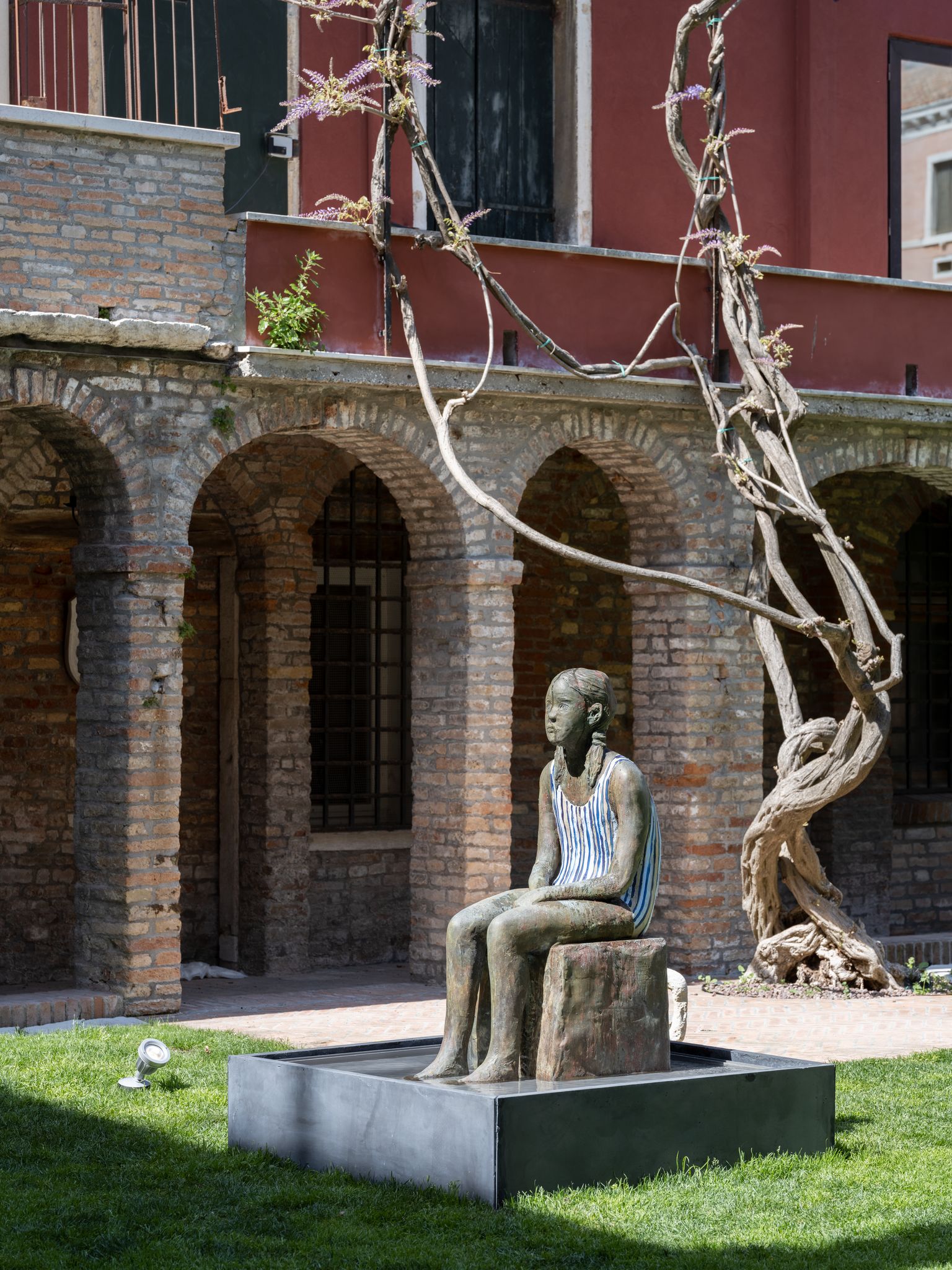
Installation view of “Claire Tabouret: I am spacious, singing flesh,” photo by Ugo Carmeni, © Claire Tabouret, courtesy of the artist and Almine Rech.
Whitewall spoke with Tabouret about the dynamics of transformation, reflected in the presence of water—both in the work and in the canals of Venice.
WHITEWALL: What was the starting point for “I’m spacious, singing flesh”? What kind of early conversations did you have with curator Kathryn Weir?
CLAIRE TABOURET: At the beginning of the project, I was interested in working around the idea of rituals and magic objects, like fertility statues. I also discovered that I was pregnant around the same time. Kathryn Weir, who curated the show, told me about the “Mater Matuta” sculptures of Capua, sublime ex-votos sculpted in volcanic tuff between 500 and 200 BC. We went to Naples to see them, and two of them are now part of the exhibition.
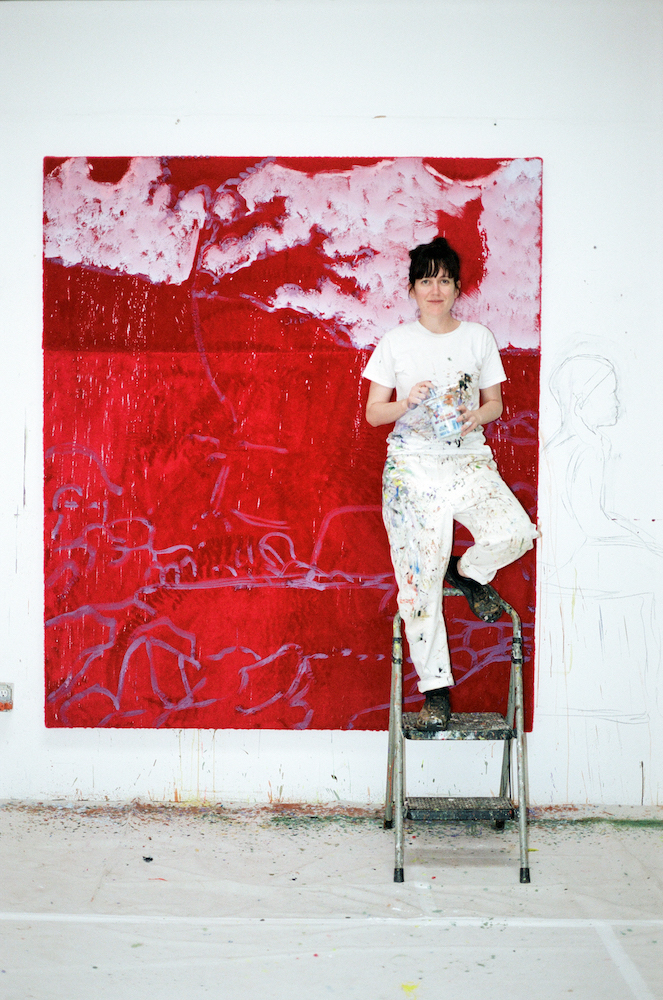
Photo by Amanda Charchian.
WW: Can you tell us about how those and the other devotional objects from archaeological and liturgical collections in Italy are in conversation with your paintings?
CT: We wanted to talk about the connection to the supernatural that is often felt during times of great change or tumult, and we were fortunately able to visit these historical sites to see the works in person beforehand. The Madre statues are ancient offerings from a temple near Capua, created by mothers to give thanks for the children they bore. There are also four “ex-Voto” paintings from the Sanctuary of the Madonna dell’Arco near Naples, which similarly are made in gratitude for miracles.
WW: The exhibition looks at the theme of transformation in your work. What is your relationship to transformation in your practice?
CT: There is, of course, a physical transformation that happens on the canvas, but I’m also thinking about questioning structures and identities within my work. I’m trying to subvert the expectations of the viewer, to make something that’s a little bit confrontational. And the transformation of the painting doesn’t end with me, because it’s always evolving in the eyes of the viewer. It’s changing every day, with every person.
WW: The earliest piece included in this survey is from 2004. Can you tell us about that piece, as well as the most recent work on view? What was the selection process like for the show?
CT: Un Matin a Venir is a film I made in 2004, starring my grandmother, Andrée. Water is very present in the film, and I wanted to talk about rituals and transformations within nature. The bronze fountains, made this year, are the most recent works and also return to this idea of water as an agent of change. The selection process took place while we were traveling through Italy, visiting Palazzo Cavanis in Venice and also some historical sites around Naples. It was exciting to look back on past work with Kathryn and unearth new links between them.
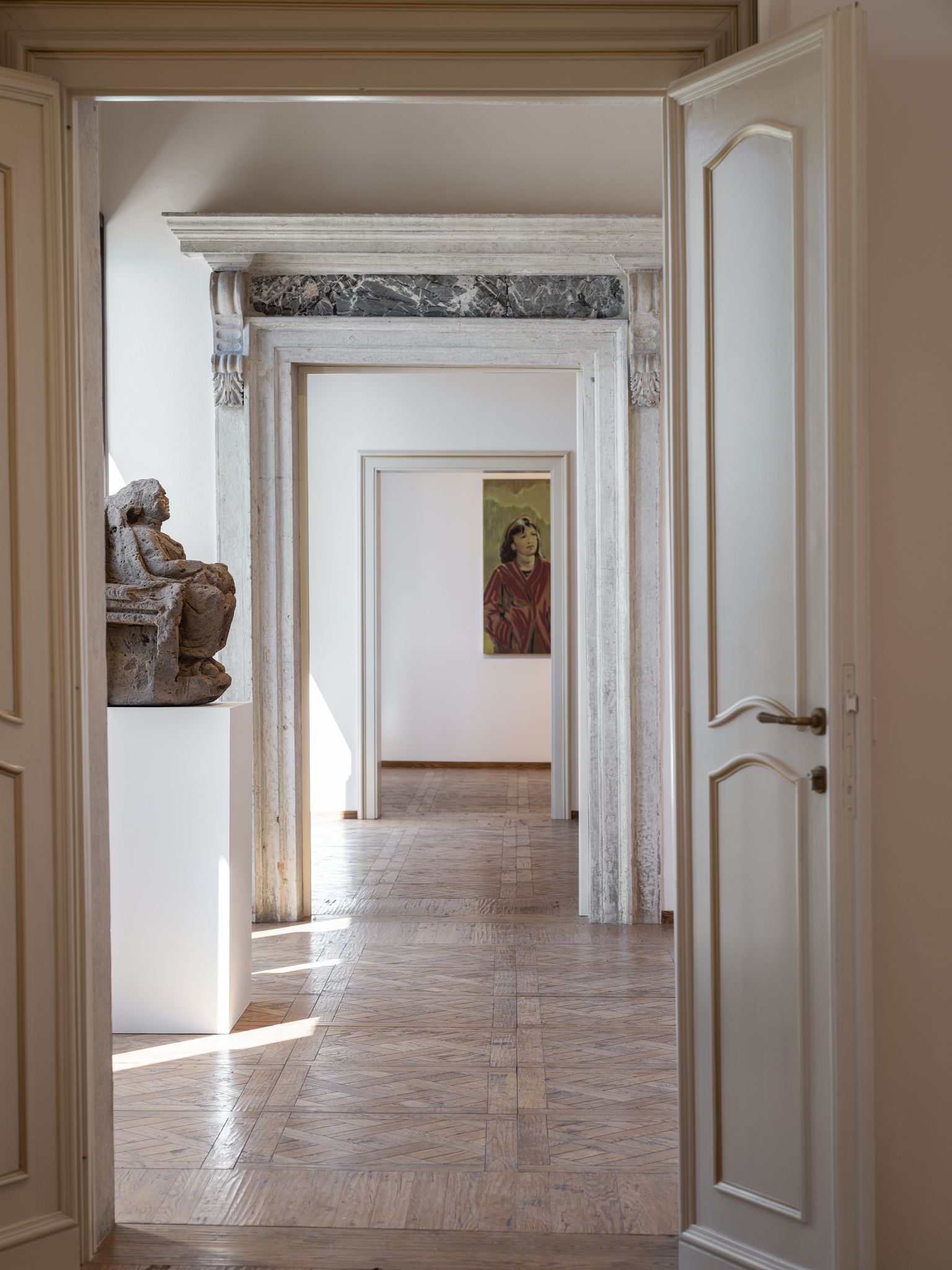
Installation view of “Claire Tabouret: I am spacious, singing flesh,” photo by Ugo Carmeni, © Claire Tabouret, courtesy of the artist and Almine Rech.
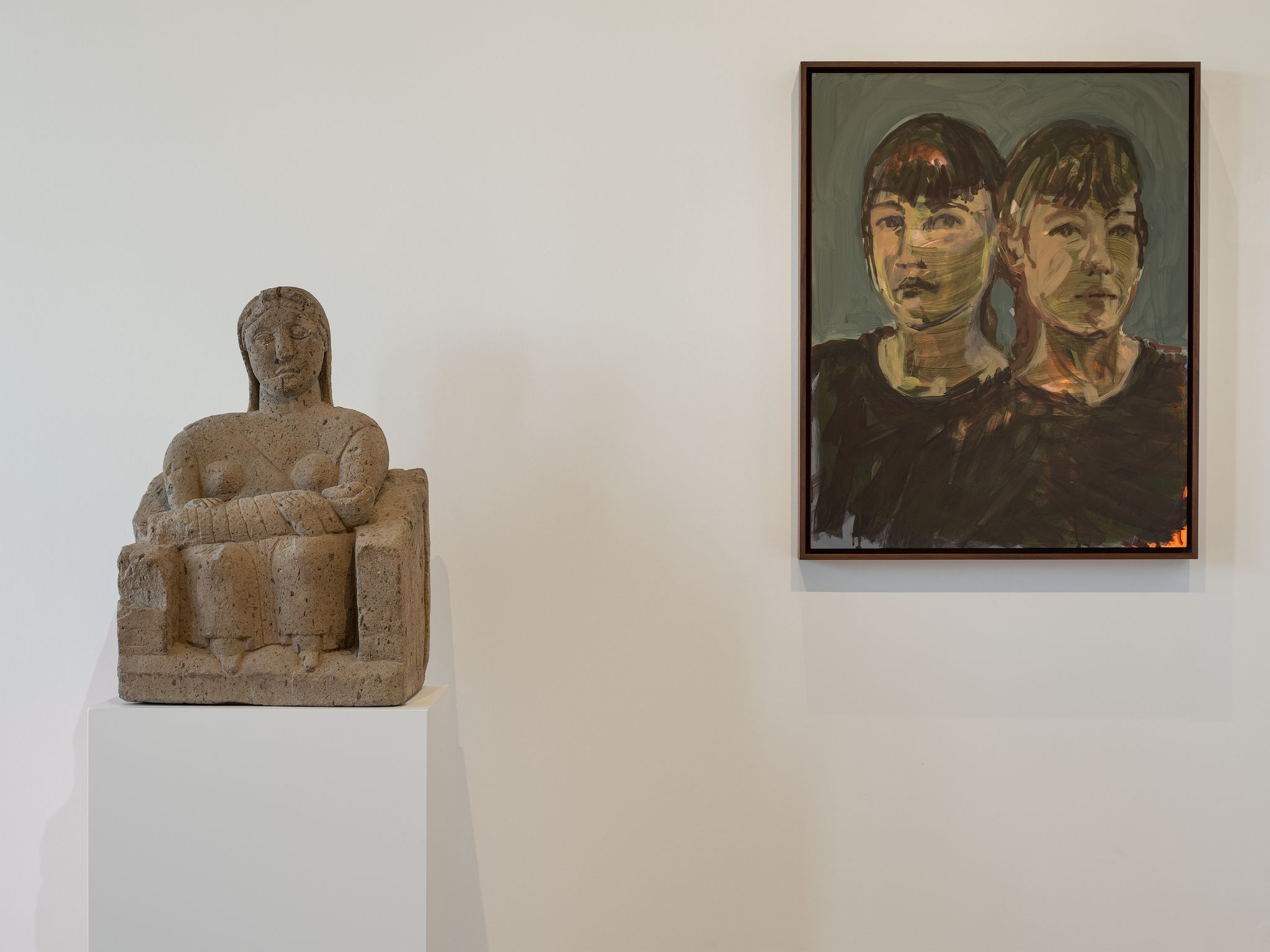
Installation view of “Claire Tabouret: I am spacious, singing flesh,” photo by Ugo Carmeni, © Claire Tabouret, courtesy of the artist and Almine Rech.
WW: How did the setting of Palazzo Cavanis impact that selection? As a painter, what is it like for you to present work in this kind of location?
CT: The setting of the Palazzo, being right on the canal, brought out some hidden dialogues between the works that feel as though they were waiting to be discovered. There are nearly 20 years between the oldest and newest works in the show—they were made during such different times in my life. I’m always thinking about the next work, so it can be hard to imagine that there are still through0lines between all these different bodies of work. But if there’s one thing that’s present in all my work it’s water, whether in a landscape or moving under the surface of a figure’s visage, echoing the Venetian canals which surround the Palazzo Cavanis.
WW: You’ve recently become a mother, and previously spoken about the pressure as an artist to separate your art from family. But that you’re starting to see more artists who don’t see love and family in competition anymore, that “we can joyfully choose whatever we want.” How has becoming a parent, and starting a family, impacted your creative process? Is that something you wanted to reflect in this show, as well?
CT: We have less time for ourselves with a child, so there is a great radicality and immediacy in the way we use this time when it arises. It’s a constraint in a way, but of course, it’s also expansive and transformative. I wanted this show to reflect that tension, the feeling of being in a dynamic state of change.
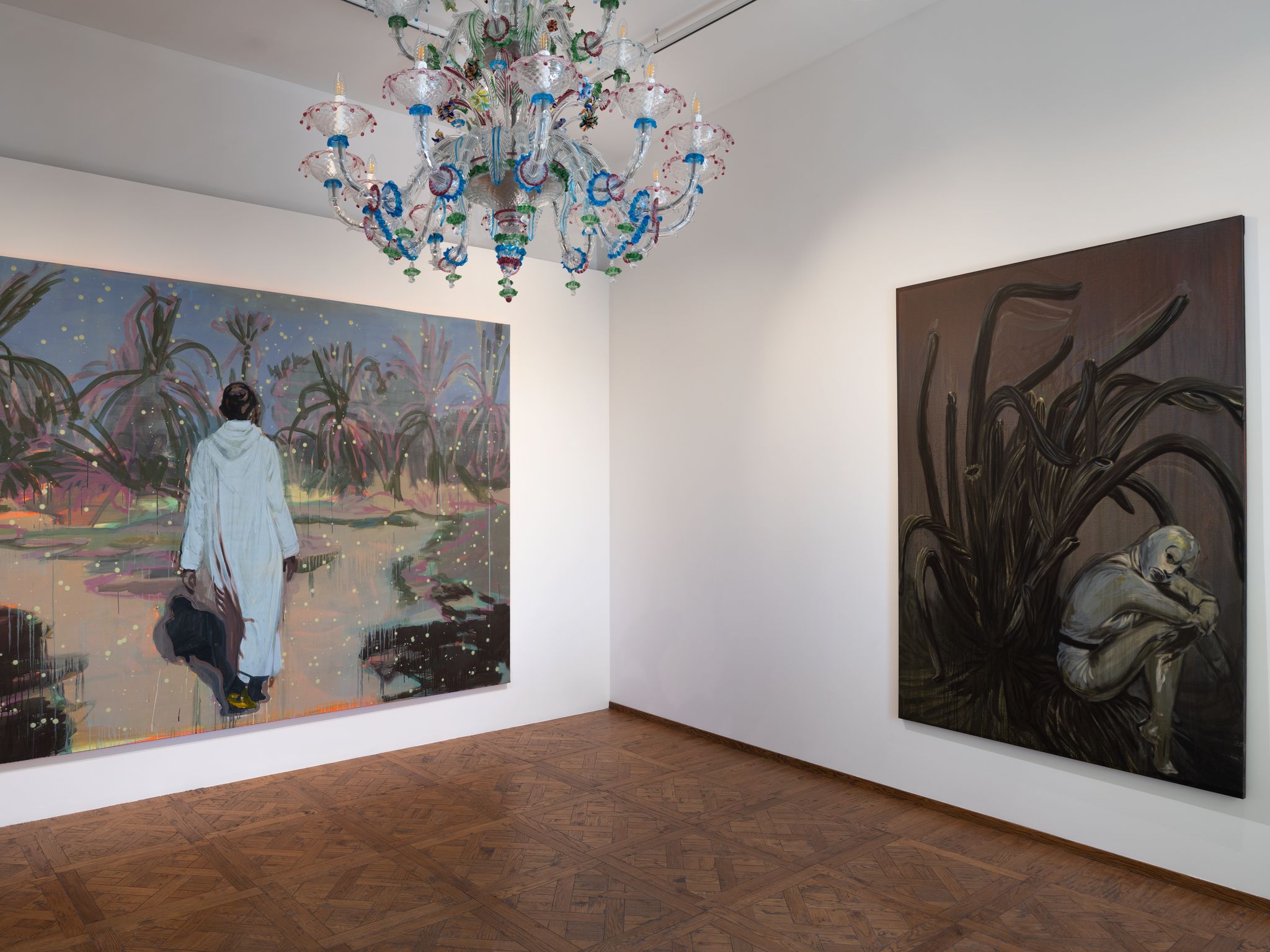
Installation view, Claire Tabouret, “I am spacious, singing flesh,” at the 59th Venice Biennale; curated by Kathryn Weir, courtesy of the artist and Almine Rech.
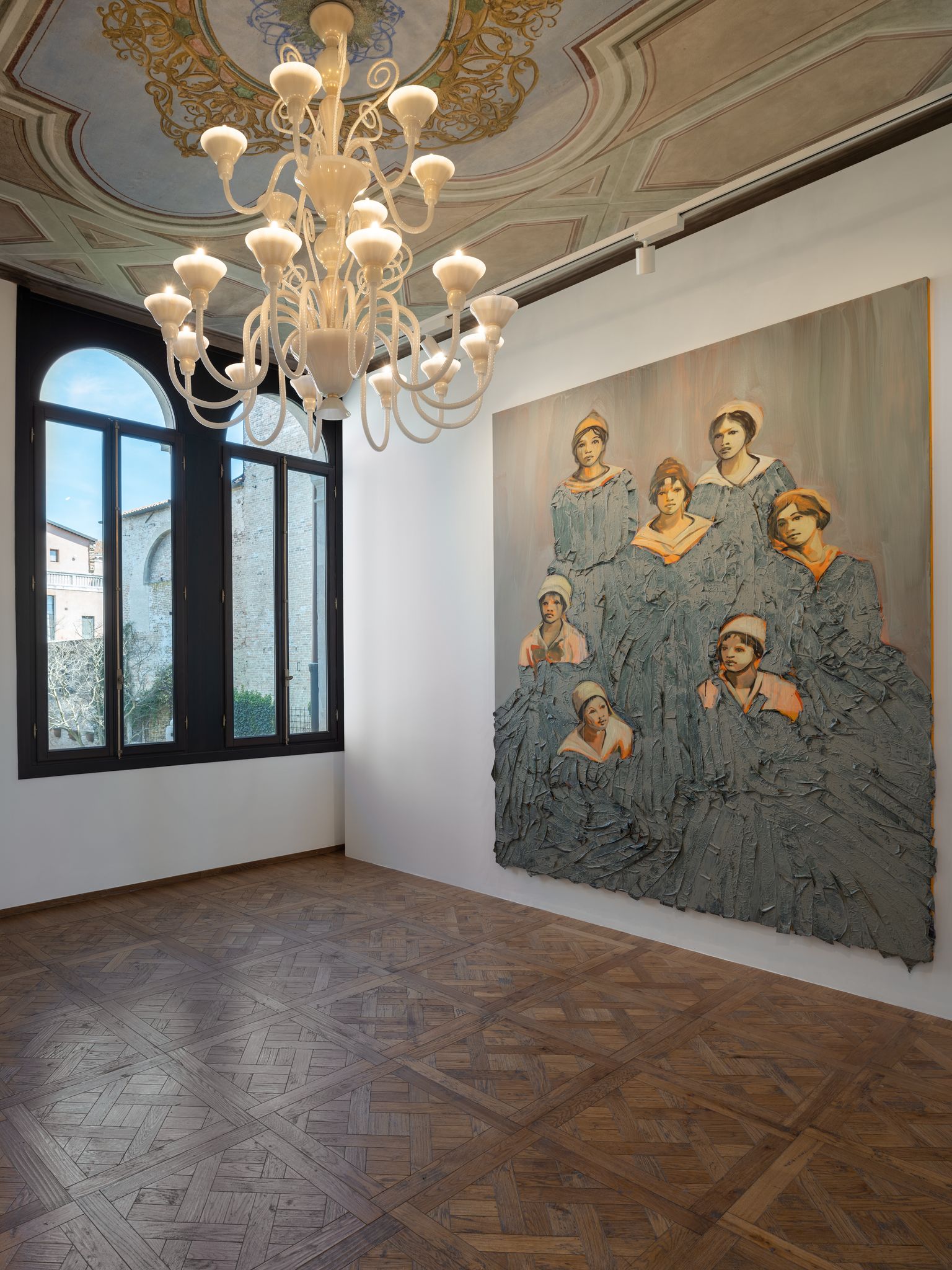
Installation view, Claire Tabouret, “I am spacious, singing flesh,” at the 59th Venice Biennale; curated by Kathryn Weir, courtesy of the artist and Almine Rech.



